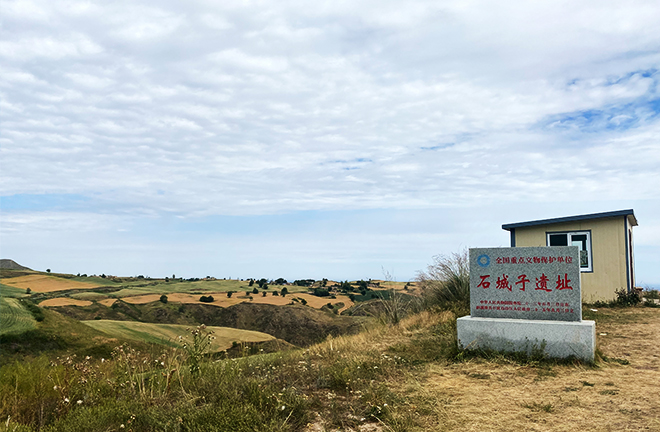Shichengzi site

Shichengzi site Photo: Courtesy of SHENG PENGFEI
The Shichengzi site was among the top 10 archaeological finds of 2019. It remains the only ancient Han Dynasty site found in Xinjiang that has been accurately and reliably dated, in a well-preserved condition, with a complete structure and distinct cultural characteristics.
The two raised ma-mian [the parts of the ancient city wall that protrude at intervals] on the north city wall highlight the defensive nature of the site. The large number of unearthed weapons provide further evidence supporting this claim. The objects unearthed at the site all bear distinct characteristics of the Han Dynasty. Combining historical records, experts have confirmed that the Shichengzi site was the city of Shule, where the famous Han general Geng Gong was stationed.
Geng’s guarding of Shule was truly an epic undertaking. In 60 BCE, the Western Han Empire established the Protectorate of the Western Regions [the first direct rule by a Chinese government of the area], officially incorporating Xinjiang into China’s territory. During the second half of the first century CE, Chinese armies brought the Western Regions back under Han control. The Protectorate was re-established in 74 CE, and General Geng Gong was stationed at Jinman city [present-day Jimsar County]. In the following year, the Northern Xiongnu troops attacked Jushi Kingdom, killed its ruler, and then attacked Geng Gong’s station. At that time, the Han court was too busy with Emperor Ming’s death to send reinforcements. Meanwhile, the Jushi Kingdom betrayed the Han and joined forces with Xiongnu to attack Geng and his army.
Geng led his troops to Shule, which was easy to defend and difficult to attack. With only a few hundred men, he held on for several months despite the lack of water and food. When their provisions ran out, they resorted to cooking and eating all the animal sinew strings from their crossbows and the leather from their armor. They refused Xiongnu’s demands to surrender and valiantly held the city. It was not until Emperor Zhang succeeded to the throne that he sent troops to defeat Xiongnu. When reinforcements arrived at Shule, only 26 people remained in the city. When they returned to the Yumen Pass with the Han army, only 13 had survived, their clothing in tatters, their bodies haggard and withered. Moved by their toughness, the commander at Yumen Pass personally bathed them and helped them change clothes.
Edited by REN GUANHONG
